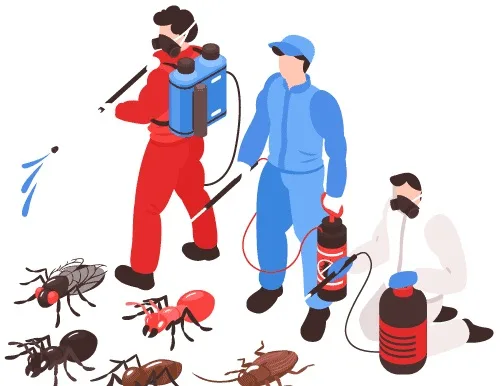When faced with the presence of mice and rats in your living space, a nuanced understanding of their behaviour becomes instrumental in devising effective pest control strategies. These common household pests, known for their nocturnal habits, nesting proclivities, and rapid reproductive rates, require a tailored approach for successful management.
In this comprehensive guide, we delve into the intricacies of mice and rats’ behaviour, offering insights that go beyond traditional pest control methods. Whether you’ve encountered signs of these rodents in your home or aim to fortify preventive measures, comprehending their nocturnal activities, dietary preferences, and territorial instincts is paramount. Tools such as Rodent Stoppers can help deter these pests before they establish nests, making prevention far easier than removal.
The quest for a pest-free environment often necessitates the expertise of professionals, such as a dedicated MiceExterminator, who possesses the knowledge and tools to address the unique challenges posed by these small yet resilient creatures.
Here’s a comprehensive understanding of the behaviour of mice and rats to enhance your pest control strategies:
**1. Nocturnal Habits:
- Nighttime Activity: Mice and rats are nocturnal, meaning they are most active during the night.
- Quiet Movements: They exhibit quiet and stealthy movements, making it challenging to detect their presence during the day.
**2. Nesting and Shelter:
- Nesting Sites: Mice and rats seek secluded areas for nesting, often using materials like paper, fabric, and insulation.
- Sheltered Spaces: Dark and hidden spaces such as attics, basements, and wall voids are preferred for building nests.
**3. Exploratory Nature:
- Curiosity: Both mice and rats are curious creatures, constantly exploring their surroundings.
- Trail Marking: They mark their paths with urine to navigate and communicate with other rodents.
**4. Dietary Preferences:
- Omnivorous Diet: Mice and rats are omnivores, consuming a wide range of food items.
- Preference for Grains: They particularly Favor grains, seeds, and cereals but can adapt their diet based on availability.
**5. Reproductive Rate:
- Rapid Reproduction: Mice and rats reproduce quickly, with a short gestation period and multiple litters per year.
- High Population Growth: Their ability to breed rapidly contributes to high population numbers if not controlled.
**6. Chewing Behaviour:
- Constant Gnawing: Rodents have a need to gnaw constantly to control the length of their teeth.
- Damage to Structures: This behaviour can lead to damage to structures, wires, and even furniture.
**7. Territorial Instinct:
- Territorial Marking: Mice and rats mark their territories with urine and may exhibit aggression towards intruders.
- Avoidance of Overlapping Territories: They tend to avoid overlapping territories to minimize conflicts.
**8. Agility and Climbing Skills:
- Excellent Climbers: Mice and rats are adept climbers, allowing them to access elevated spaces.
- Squeezing Through Small Gaps: They can squeeze through openings as small as a quarter, making it challenging to seal off entry points.
**9. Senses and Detection Avoidance:
- Keen Senses: Mice and rats have keen senses of smell, taste, and hearing.
- Avoidance of Traps: They may avoid areas with unfamiliar odors, making traditional traps less effective.
**10. Social Behaviour:
- Social Creatures: Some species of mice are social, while others are more solitary.
- Group Dynamics: Rats, especially, exhibit social behaviours, living in colonies and relying on group cooperation.
**11. Response to Threats:
- Cautious Behaviour: Mice and rats are cautious and may avoid new objects or changes in their environment.
- Quick Retreat: When threatened, they quickly retreat to their nests or burrows.
**12. Habitat Adaptation:
- Versatile Habitat Choices: Mice and rats can adapt to various environments, from urban areas to rural settings.
- Human Proximity: They thrive in close proximity to human dwellings, seeking food and shelter.
Understanding these behavioural traits of mice and rats provides a foundation for more effective pest control strategies. Employing a combination of prevention, exclusion, and targeted trapping methods can help manage and control rodent populations in and around your home. By addressing their specific behaviours, you can create an environment that is less attractive and more challenging for mice and rats to thrive.
Join us in unravelling strategies that align with the region’s specific needs, ensuring that rat pest control in Burlington Vermont, is approached with a tailored and effective perspective. Together, we navigate the landscape of pest control, preserving the tranquillity of Burlington homes by addressing the challenges posed by unwanted rodent inhabitants.

